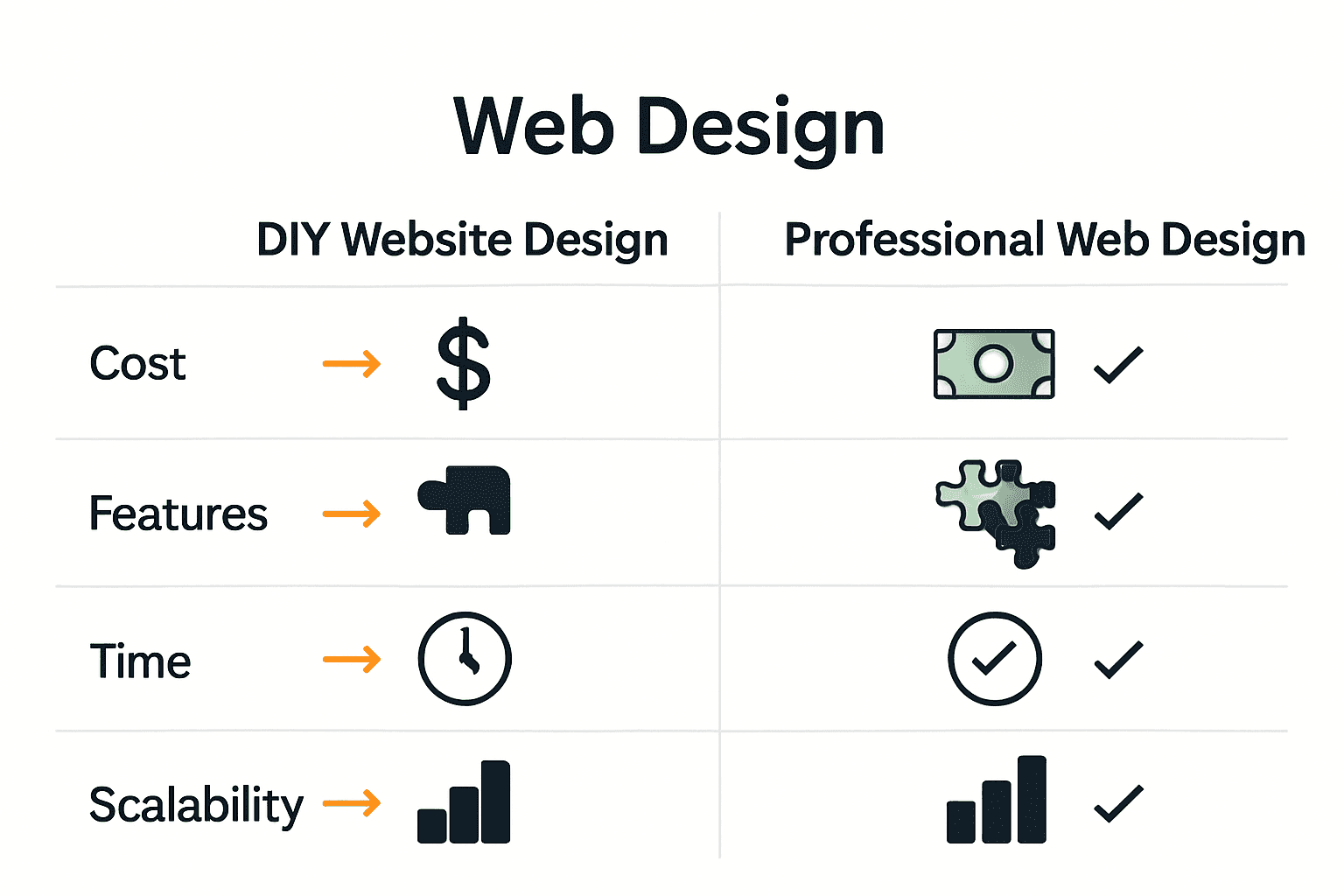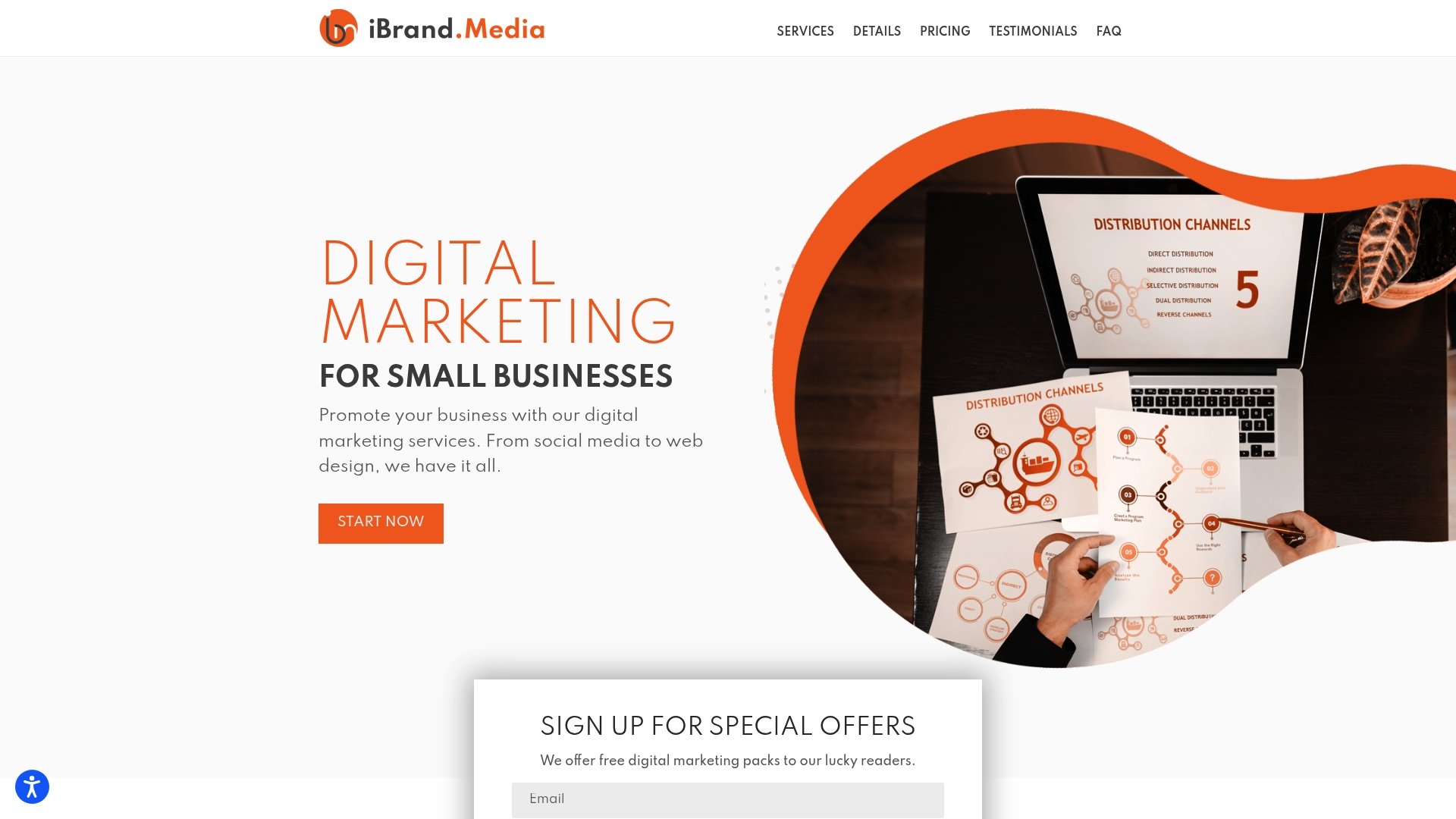More than 60 percent of american small business owners now build their own websites instead of hiring professionals. This hands-on trend gives entrepreneurs total creative control and keeps costs low but also comes with its own set of challenges. Whether you want to save money, speed up your launch, or simply experiment with design, understanding DIY website design can help you decide if this approach matches your business goals.
Table of Contents
- What Is DIY Website Design?
- Types of DIY Website Design Platforms
- Key Benefits of Designing Your Own Website
- Major Drawbacks and Common Limitations
- Comparing DIY Design and Professional Services
- Cost, Skills, and Time Considerations
Key Takeaways
| Point | Details |
|---|---|
| DIY website design | Enables entrepreneurs to build their own websites, fostering creative control and cost savings. |
| Platform options | Various platforms exist (like Wix and WordPress), catering to different needs such as e-commerce and portfolios. |
| Benefits and drawbacks | While it offers affordability and flexibility, DIY design may present technical challenges and limited customization. |
| Investment considerations | Evaluate budget, required skills, and time commitments to determine the best website design approach for your business. |
What Is DIY Website Design?
DIY website design represents a hands-on approach where entrepreneurs and small business owners create their own websites without hiring professional web designers. According to the Wikipedia DIY research approach, this method emphasizes self-sufficiency and direct control over the digital creation process.
The core philosophy behind DIY website design stems from the broader ‘Do it yourself’ principle, which encourages individuals to undertake tasks independently. For website creation, this means using website builders, templates, and online platforms that enable non-technical users to construct functional and visually appealing websites without extensive coding knowledge.
Typical DIY website design strategies involve:
- Using drag-and-drop website builders like Wix or Squarespace
- Selecting pre-designed templates matching business aesthetics
- Customizing layouts, colors, and content without professional intervention
- Integrating essential features like contact forms, image galleries, and e-commerce functionality
While DIY website design offers significant cost savings and creative control, it also requires time investment and a basic understanding of design principles. Website design tips for beginners can help entrepreneurs navigate potential challenges and create professional-looking websites efficiently.
Types of DIY Website Design Platforms
DIY website design platforms offer diverse solutions for entrepreneurs and small business owners looking to create their own websites without extensive technical expertise. Readymag represents one innovative example of a browser-based, no-code design platform that enables users to craft websites and digital portfolios without coding knowledge.
The primary categories of DIY website design platforms include:
- Website Builders: Drag-and-drop platforms like Wix, Squarespace, and Weebly
- Content Management Systems (CMS): WordPress, Joomla, and Drupal
- Portfolio Platforms: Behance Portfolio, which allows creative professionals to showcase their work
- E-commerce Focused Platforms: Shopify, BigCommerce, and WooCommerce
Each platform offers unique features catering to different business needs. Website builders typically provide the most user-friendly experience with pre-designed templates and intuitive interfaces. Content management systems offer more flexibility and customization, while portfolio platforms focus on visual presentation and creative showcasing.
When selecting a DIY website design platform, businesses should consider factors like ease of use, design flexibility, pricing, and specific feature requirements.
 Building a business website requires careful evaluation of these platform characteristics to ensure the chosen solution aligns with your specific business goals and technical capabilities.
Building a business website requires careful evaluation of these platform characteristics to ensure the chosen solution aligns with your specific business goals and technical capabilities.
Key Benefits of Designing Your Own Website
Designing your own website offers entrepreneurs and small business owners unprecedented control and cost-effectiveness in establishing their online presence. Cost savings emerge as the most immediate advantage, allowing businesses to allocate financial resources more strategically instead of investing heavily in professional web design services.
Key benefits of DIY website design include:
- Complete Creative Control: Design every aspect of your digital brand
- Immediate Updates: Make changes instantly without waiting for a designer
- Cost Efficiency: Significantly lower expenses compared to hiring professionals
- Learning Opportunity: Develop valuable digital skills in the process
- Flexibility: Experiment with different designs and layouts quickly
The learning curve associated with DIY website design can actually become a strategic advantage. By understanding the intricacies of web design, business owners gain deeper insights into digital marketing and user experience principles. Understanding the benefits of web design can transform what initially seems like a technical challenge into a powerful business skill.
Moreover, modern DIY website platforms provide intuitive interfaces that democratize web design. These tools come with responsive templates, drag-and-drop functionality, and built-in SEO tools that enable even non-technical users to create professional-looking websites. The combination of affordability, creative freedom, and user-friendly technology makes DIY website design an increasingly attractive option for small businesses seeking to establish a robust online presence.
Major Drawbacks and Common Limitations
DIY website design, while appealing, comes with significant technical challenges and potential roadblocks for businesses seeking robust online platforms. LinkedIn research highlights that DIY approaches often present substantial technical limitations that can impact site performance and growth potential.
The most critical drawbacks of DIY website design include:
- Limited Customization: Restricted design and functionality options
- Technical Complexity: Challenging implementation of advanced features
- Performance Constraints: Potential slowdowns and optimization issues
- SEO Limitations: Reduced ability to implement advanced search optimization
- Security Vulnerabilities: Increased risk of potential website security gaps
Rebolthq research emphasizes that while DIY platforms are affordable and user-friendly, they frequently lack specialized features necessary for business scaling. Entrepreneurs might find themselves constrained by template limitations, unable to create truly unique digital experiences that distinguish their brand from competitors.
Additionally, the time investment required to learn and implement a professional-quality website can be substantial. What initially seems like a cost-saving measure might ultimately become a drain on valuable business resources. Website design best practices can help mitigate some of these challenges, but they cannot completely eliminate the inherent limitations of DIY approaches for businesses with complex digital requirements.
Comparing DIY Design and Professional Services
Choosing between DIY website design and professional services represents a critical decision for businesses seeking to establish a compelling online presence. Cost and complexity emerge as the primary differentiating factors between these two approaches, with each offering distinct advantages and potential drawbacks.
Key comparison points include:
- Budget: DIY ($0-$200) vs Professional ($1,000-$5,000)
- Design Quality: Template-based vs Custom, fully tailored designs
- Time Investment: Significant personal time vs Immediate professional execution
- Technical Complexity: Limited features vs Advanced, sophisticated functionality
- Scalability: Restricted growth potential vs Flexible, adaptable solutions
Professional web design services provide comprehensive expertise that DIY platforms cannot match. Experienced designers bring strategic insights, understanding of user experience principles, and technical knowledge that transform websites from simple online brochures to powerful marketing tools. Why invest in web design becomes particularly crucial for businesses looking to differentiate themselves in competitive digital markets.
Ultimately, the choice depends on specific business goals, technical skills, and available resources. Smaller businesses or startups might find DIY solutions adequate, while companies with complex requirements or those in competitive industries will likely benefit from professional design services that can deliver sophisticated, high-performance websites tailored to their unique brand identity.

Cost, Skills, and Time Considerations
Website development requires a strategic assessment of three critical resources: financial investment, technical expertise, and time commitment. Entrepreneurs must carefully evaluate these interconnected factors to determine the most appropriate approach for their unique business needs and constraints.
Key resource considerations for DIY website design include:
- Financial Investment:
- DIY platforms: $0-$200 annual cost
- Professional services: $1,000-$5,000 initial investment
- Ongoing maintenance costs
- Technical Skills Required:
- Basic design understanding
- Elementary coding knowledge
- User interface principles
- SEO fundamentals
- Time Investment:
- Learning platform mechanics
- Design implementation
- Content creation
- Ongoing site management
The learning curve associated with DIY website design can be substantial, potentially requiring 20-40 hours of initial training and implementation. Business owners must realistically assess whether their time is better spent developing technical skills or focusing on core business activities. Understanding DIY marketing vs agency support becomes crucial in making an informed decision about resource allocation.
Ultimately, the most effective approach balances cost efficiency with professional quality. Small businesses with limited budgets might start with DIY solutions, gradually transitioning to professional services as their digital presence and technical complexity grow. This strategic approach allows for incremental investment while maintaining flexibility in website development and brand representation.
Take Control of Your Website Without the Stress
The Complete Guide to DIY Website Design Pros and Cons highlights common challenges like limited customization, technical complexity, and time demands that can overwhelm business owners trying to build their own sites. If you are struggling with these DIY roadblocks or seeking to elevate your online presence without sacrificing budget control, ibrand.media offers expert web design and digital marketing solutions tailored for small and medium businesses.

Explore practical strategies and affordable services in our Uncategorized | Ibrandmedia section to understand how to enhance your site effectively. Don’t let technical barriers delay your growth. Visit ibrand.media today, and start transforming your DIY efforts into a professional website that drives real results and sales.
Frequently Asked Questions
What is DIY website design?
DIY website design refers to the practice of entrepreneurs and small business owners creating their own websites using tools like website builders and templates, without needing professional web design assistance.
What are the key benefits of designing my own website?
The key benefits include complete creative control, immediate updates, cost efficiency, learning valuable digital skills, and flexibility to experiment with designs and layouts.
What are the major drawbacks of DIY website design?
Major drawbacks include limited customization options, technical complexity in implementing advanced features, potential performance constraints, SEO limitations, and increased security vulnerabilities.
How does DIY website design compare to hiring professional web designers?
DIY website design is generally more cost-effective and allows for personal control but may lack the polish and advanced features of professionally designed websites. Professional services often provide custom, tailored solutions and better technical expertise, particularly for complex projects.
Recommended
- Why Invest in Web Design: Complete Guide for SMBs | Ibrandmedia
- Understanding the Benefits of Web Design for Your Business | Ibrandmedia
- Building a Business Website: Your 2025 Step-by-Step Guide | Ibrandmedia
- Mobile-Friendly Website Design: Complete Guide | Ibrandmedia
- 5 Ways DIY Website Builders Cost You Clients (And How to Fix It)
- Pourquoi Choisir Un Site Professionnel : Guide Complet – IT-Pascaud

Recent Comments